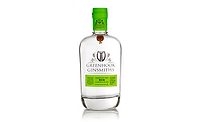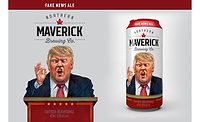Variety, premiumization drive on-premise channel
Beverages deliver 50 percent of profit in bars, restaurants




Regardless of whether consumers are drinking beer, wine or spirits when dining out, suggested food pairings and recommendations from influencers, like bartenders and wait staff, can motivate consumers to try something new or trade up to a more premium product. In its May 2016 “On Premise Alcohol Trends – US” report, Chicago-based Mintel reports that away-from-home alcohol sales steadily are growing, with the on-premise channel’s sales totaling $98.7 billion in 2015 and a forecasted revenue of $118.4 billion by 2020.
“Twenty-eight percent of consumers are ‘drink-type loyalists,’ meaning [that] they typically order one type of alcoholic beverage when they go out (e.g., they only order wine),” the report states.
Yet, to give consumers the drink variety that they crave, today’s restaurants are offering 13 percent more alcohol beverages on menus than they did in the previous three years, the report says.
“Looking at specific drinks, liquor menus have grown substantially with gin and whiskey being especially trendy. American-style IPAs (India pale ales) helped drive growth of the entire beer category, and dessert wines, primarily driven by port, experienced very strong growth,” Mintel’s report states. “Sour, spicy and even bitter drinks are trending, yet … fruity and sweet drinks are still consumer favorites, including the strawberry Margarita for the traditionalist or the smoky old fashioned for the trendy drinker.”
Scott Elliott, senior vice president for Nielsen CGA, Chicago, notes that premiumization is key to boosting sales in the on-premise channel, which is experiencing flat or low single-digit growth, he says.
“There are lots of issues going on, but beer is generally losing share to wine and spirits,” Elliott says. “Total beer volume over the last year is down 2 percent, wine is up about 1 percent and spirits is up 1.3 percent in terms of volume.
“Beer continues to lose share, but really that share loss is being driven by a 6.5 percent decline in volume for domestic premium and even the continued rise of imports, [which are] up 4.8 percent in volume; Mexican imports, up 5.9 percent; and craft, up 1.2 percent, is not enough to keep that category holding its own,” he continues. “Similar to beer, there’s a big premiumization trend in spirits. The big growth is coming from whiskeys, tequilas, cognacs and gins, and the price mix is up 2 percentage points.”
In 2016, the fastest growing spirits within on-premise were premium or ultra-premium brands, he adds. “It’s used for a treat, it’s used for an experience, and it enables consumers to access a category, a brand, a cocktail — something they can’t easily access at home. Are consumers more willing to try a shot of a $50, small-batch bourbon in the on-premise for $7 or $8 as compared to buying a bottle for $50? Of course they are.”
Bill Edwards, senior vice president of national accounts on-premise at Miami-based Southern Glazer’s Wine & Spirits LLC, also highlights the trend toward premium and ultra-premium products.
“Incidence may be down, but revenue is growing as people moderate the number of drinks [consumed] but migrate upward to a more premium experience,” Edwards says. “This continued trend is playing a role in how accounts stratify their portfolio of offerings. This also cascades in how these premium products are presented in cocktails, not only for the lead brands, but there are also ramifications to flavor modifiers, cordials, mixers and even garnishes.”
For the fifth consecutive year, spirits is the only adult beverage category achieving volume gains in restaurants and bars, says Donna Hood Crecca, associate principal at Chicago-based Technomic, citing the market research firm’s November 2016 report titled “On-Premise Intelligence.” “Whiskey is a driving force, particularly straight American whiskey (bourbon, rye, etc.), Irish whiskey and single-malt Scotch. After several years of decline, vodka, the largest volume spirits category on-premise, turned a corner in 2016,” Hood Crecca says. “Tequila’s growth continues, as does consumer interest in cognac. … While the Margarita remains the most commonly menued cocktail, the [Moscow] mule was the fastest growing in terms of presence on menus at leading restaurants.”
Although total on-premise beer volume contracted 0.3 percent in 2016, the on-premise beer portfolio is expanding and diversifying, Hood Crecca notes. “Nearly half of consumers report drinking more craft beer and more local brews in restaurants and bars than three years ago,” she explains. “Even with that, total beer volume’s decline continues in restaurants and bars, a trend driven primarily by consumer migration away from mass-marketed beer brands and styles [and] toward more flavorful and differentiated beer, cider, spirits and wine offerings.
“… Competition for tap handles has intensified, with Mexican imports, cider, more craft beers and now hard sodas vying for placement,” she continues. “Variety is the demand of consumers today, especially younger ones. Two-thirds of consumers (67 percent) say [that a] variety of beer offerings is important in restaurants and bars, while 77 percent of those aged 21-34 prioritize beer variety.”
When it comes to wine, on-premise consumers are more focused on quality than price, and they also have a plethora of options at many price points from which to choose and this can be intimidating, says Mike Ginley, a partner at Next Level Marketing, Westport, Conn.
“Things like a sample to taste before ordering, tasting flights, food and wine pairing suggestions and server recommendations all help to take the fear out of ordering wine in the on-premise,” Ginley says. “Consumers seek wines that are sweet, fruity and full bodied. Varietals like Merlot, Moscato and Rosé have risen in popularity over the past few years. Sparkling wines, like Prosecco, have also seen dramatic increases in popularity, and we are seeing more wines used as ingredients in cocktails.”
Driving profits through beverage
According to Next Level Marketing’s 2017 “Annual VIBE Beverage Consumer Trend Study,” consumer perception of an improved economy translated into 80 percent of consumers going out to eat and drink as often, or more often, than they did in the previous year, with 70 percent of consumers spending the same amount or more on-premise.
“When looking at the types of drinks consumers are ordering, 91 percent are ordering the same or better quality drinks, with only
9 percent ordering less expensive drinks,” Ginley explains. “On-premise channel sales are split 80 percent food and 20 percent beverage, but beverage delivers over 50 percent of the channel profit. Beverage plays a key role in enhancing the overall dining experience.”
The on-premise channel has seen an influx of fast-causal restaurants offering spirits, wine and beer, says Eric Schmidt, director of alcohol research at New York-based Beverage Marketing Corporation (BMC). In order to make a mark in this competitive market, beverage companies need to cater to consumers in different ways, he explains. “The baby boomer is aging out of the segment, and now we’re seeing millennials who are constantly seeking something new, along with the addition of Generation Z consumers to the mix over the next few years, bodes well for the future of beverage alcohol,” Schmidt says. “This demographic is more social media savvy and that’s the best way to engage these consumers as they enter the beverage alcohol marketplace.”
To deliver better on-premise alcohol programs and maximize sales, improving collaboration efforts between wholesalers and suppliers also is crucial, particularly because there is a disconnect between supply and demand, Nielsen’s Elliott explains.
“[O]n-premise is difficult. There [are] a lot of challenges, but for suppliers and wholesalers who are using data to help drive their decisions, there’s massive opportunity,” he says. “… One in four people don’t know what they’re about to drink when they enter an outlet — the growth opportunities are out there.” BI
Looking for a reprint of this article?
From high-res PDFs to custom plaques, order your copy today!








